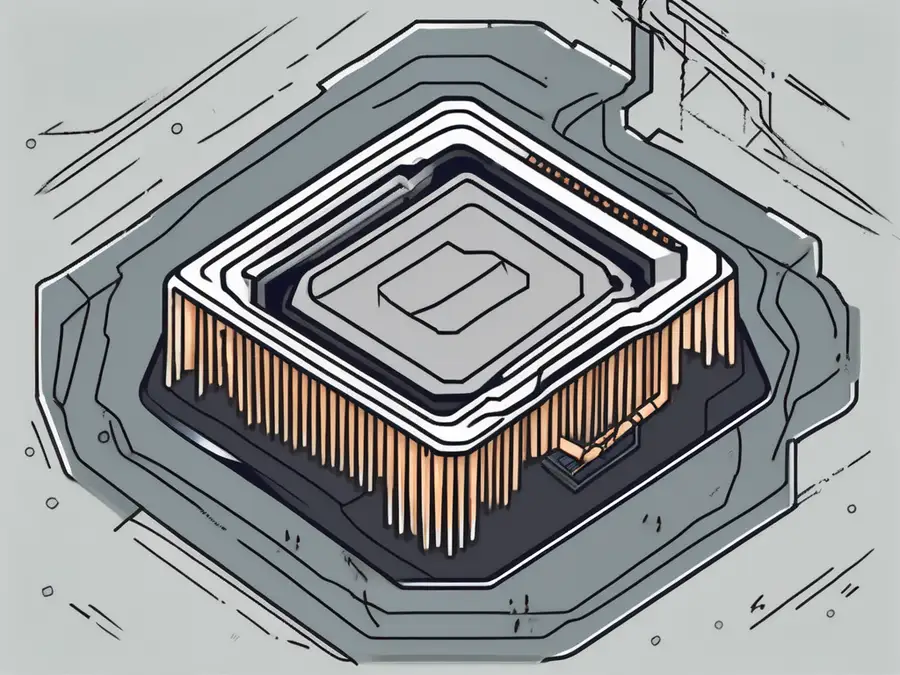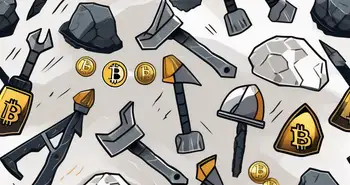Where to Start with CPU Mining?

In recent years, cryptocurrency mining has become a hot topic. Many people are interested in mining their own digital coins, and one of the most accessible methods is CPU mining. In this ultimate guide, I will take you through the ins and outs of CPU mining, from its basics to choosing the right hardware and setting up your own mining rig. So let's get started!
What is CPU Mining?
Before diving into the details, let's first grasp the concept of CPU mining. In simple terms, CPU mining refers to using the central processing unit of your computer to mine cryptocurrencies. It involves solving complex mathematical problems to confirm and process transactions on a blockchain network. As each transaction is verified, you are rewarded with a certain amount of cryptocurrency.
What sets CPU mining apart is its accessibility. Unlike GPU mining, which requires expensive hardware, CPU mining can be done using a regular computer. This makes it an attractive option for beginners or those who want to dip their toes into the world of mining.
To understand CPU mining, it’s important to know the technical role of the CPU, or central processing unit. The CPU is the main part of a computer that executes instructions and performs calculations. In mining, this processing power is used to validate transactions and secure the cryptocurrency network.
Over the years, CPU mining has adapted alongside technological advances and shifts in cryptocurrency. While not as fast or efficient as GPU or ASIC mining, CPU mining still has a niche in the digital currency world.
The Mechanics of CPU Mining
Now that you have a basic understanding of CPU mining, let's explore how it works.
CPU mining, once a popular method for individuals to participate in cryptocurrency mining, involves utilizing the processing power of a computer's central processing unit to solve complex cryptographic puzzles. Miners compete against each other to find a solution to a mathematical problem that allows them to add a new block to the blockchain and receive a reward in the form of newly minted coins or transaction fees.
How Does CPU Mining Work?
The process of CPU mining involves solving cryptographic puzzles using your computer's processor. Miners compete to find a solution to a mathematical problem, and the first miner to solve it gets to add a new block to the blockchain and receive a reward.
As the difficulty of mining increases, it becomes harder for CPUs to compete with more powerful mining hardware. However, certain cryptocurrencies are designed to be CPU-friendly, providing an opportunity for CPU miners to still be profitable.
While CPU mining was once the go-to method for mining cryptocurrencies like Bitcoin, the rise of specialized mining hardware known as application-specific integrated circuits (ASICs) has made it less viable for CPUs to compete. ASICs are designed specifically for mining and offer significantly higher hash rates, making them much more efficient at solving the complex algorithms required for mining.
The Role of Hashing in CPU Mining
Hashing is a crucial aspect of CPU mining. It refers to the process of converting input data into fixed-length strings of characters. In CPU mining, miners use hashing algorithms to solve the mathematical puzzles required for cryptocurrency mining. The most commonly used algorithm is SHA-256 (Secure Hash Algorithm 256-bit).
Each hash generated by a CPU miner is unique, and miners' computing power determines the number of hashes they can generate per second. The more hashes a miner can produce, the higher their chances of finding the solution and earning the mining reward.
As the landscape of cryptocurrency mining continues to evolve, CPU mining remains a viable option for certain cryptocurrencies that are resistant to ASIC mining. By understanding the mechanics of CPU mining and the role of hashing in the process, miners can make informed decisions about the most effective mining strategies to pursue.
CPU Mining vs. GPU Mining
It's important to differentiate between CPU mining and GPU mining to understand their pros and cons.
Key Differences
One major difference between CPU and GPU mining is the hardware used. As the name suggests, CPU mining relies on the central processing unit, while GPU mining uses the graphics processing unit. GPUs are more efficient in performing repetitive tasks, making them ideal for mining cryptocurrencies.
However, both CPU and GPU mining aim to solve complex mathematical problems to verify transactions. While GPU mining is generally more powerful and profitable, CPU mining can still be viable for certain cryptocurrencies or for miners with lower budgets.
Pros and Cons of CPU and GPU Mining
Let's weigh the pros and cons of CPU and GPU mining to help you make an informed decision:
CPU Mining Pros:
- Accessible, can be done using a regular computer
- Low cost, no need for expensive hardware
- Less power consumption compared to GPUs
CPU Mining Cons:
- Lower hash rate, less powerful compared to GPUs
- Lower profitability for popular cryptocurrencies
- Difficulty in competing with more advanced mining hardware
GPU Mining Pros:
- Higher hash rate, more powerful compared to CPUs
- Greater mining profitability for popular cryptocurrencies
- Ability to mine various cryptocurrencies
GPU Mining Cons:
- Higher upfront cost, GPUs can be expensive
- Increased power consumption
- Requires more advanced technical knowledge
Choosing the Right Hardware for CPU Mining
Now that you're familiar with the differences between CPU and GPU mining, let's explore the essential features of a CPU mining rig and the top CPU models for mining.
Essential Features of a CPU Mining Rig
When building a CPU mining rig, there are a few key features to consider:
- Processor Power: Look for a CPU with high processing power and a high number of cores, as this will determine your mining efficiency.
- Cooling System: Proper cooling is vital to prevent overheating and ensure optimal performance.
- Motherboard: Choose a motherboard that supports multiple GPUs and has ample PCIe slots, giving you room to expand if you choose to switch to GPU mining in the future.
- Power Supply Unit (PSU): Make sure you have a reliable PSU that can handle the power requirements of your CPU mining rig.
Top CPU Models for Mining
There are several CPU models that are known for their mining capabilities. Here are a few popular choices:
- AMD Ryzen Threadripper 3990X
- Intel Core i9-10900K
- AMD Ryzen 9 3950X
These CPUs offer high processing power and multiple cores, making them suitable for CPU mining.
Setting Up Your CPU Mining Rig
Now that you have the necessary hardware, it's time to set up your CPU mining rig. Follow these steps to get started:
Step-by-Step Guide to Building Your Rig
1. Assemble all the necessary components, including the CPU, motherboard, RAM, storage, PSU, and cooling system.
2. Install the CPU onto the motherboard, following the manufacturer's instructions.
3. Insert the RAM sticks into the appropriate slots on the motherboard.
4. Connect the storage device (SSD or HDD) to the motherboard.
5. Install the motherboard into the mining rig case.
6. Connect the PSU to the motherboard and other components, ensuring proper power supply.
7. Install the cooling system, such as fans or liquid cooling, to keep your CPU and other components cool.
8. Connect a monitor, keyboard, and mouse to configure the necessary settings.
9. Install the mining software of your choice and configure it according to the cryptocurrency you wish to mine.
Configuring Your Mining Software
Once your CPU mining rig is set up, you need to configure the mining software. Here are the basic steps for configuration:
- Download and install a CPU mining software such as CGMiner or XMR-Stak.
- Configure the mining software with the necessary parameters, including the pool address, wallet address, and mining algorithm.
- Join a mining pool to increase your chances of earning rewards.
- Start mining and monitor your rig's performance regularly.
Remember, CPU mining may not yield the same profits as more advanced mining methods, but it allows you to learn and participate in the world of cryptocurrencies without breaking the bank.
Frequently Asked Questions (FAQ)
Q: Is CPU mining still profitable?
A: While CPU mining may not be as profitable as it once was, certain cryptocurrencies are still CPU-mineable. It's crucial to consider factors such as electricity costs, mining difficulty, and the coin's value to determine the profitability of CPU mining in your specific situation.
Q: Can I mine Bitcoin using CPU?
A: Bitcoin mining has become dominated by ASICs (Application-Specific Integrated Circuits) and is no longer practical for CPU mining. However, there are alternative cryptocurrencies like Monero (XMR) that are CPU-friendly and can be mined using CPUs.
Q: What are the advantages of joining a mining pool?
A: Joining a mining pool allows you to combine your computing power with other miners, increasing the chances of earning mining rewards. It also provides a more stable and consistent income stream compared to solo mining.
Q: Can I switch from CPU mining to GPU mining later?
A: Yes, if you build your CPU mining rig with a motherboard that supports multiple GPUs, you can easily switch to GPU mining in the future. Simply add the necessary graphics cards to your rig and configure the mining software accordingly.
CPU mining is a great entry point for beginners and those exploring the world of cryptocurrencies. While it may not offer the same profitability as other mining methods, it provides a valuable learning experience and the opportunity to contribute to the blockchain network. With the right hardware, proper setup, and a reliable mining software, you can embark on your CPU mining journey with confidence!
Ready to elevate your crypto journey without the extra hassle?
Join Morpher, the trading platform with zero fees, infinite liquidity, and access to a wide range of assets, from cryptocurrencies to stocks and unique markets like NFTs. Built on the Ethereum Blockchain, Morpher offers up to 10x leverage and a seamless trading experience. Sign up today, claim your free bonus, and trade like never before.

Disclaimer: All investments involve risk, and the past performance of a security, industry, sector, market, financial product, trading strategy, or individual’s trading does not guarantee future results or returns. Investors are fully responsible for any investment decisions they make. Such decisions should be based solely on an evaluation of their financial circumstances, investment objectives, risk tolerance, and liquidity needs. This post does not constitute investment advice.

Painless trading for everyone
Hundreds of markets all in one place - Apple, Bitcoin, Gold, Watches, NFTs, Sneakers and so much more.

Painless trading for everyone
Hundreds of markets all in one place - Apple, Bitcoin, Gold, Watches, NFTs, Sneakers and so much more.








